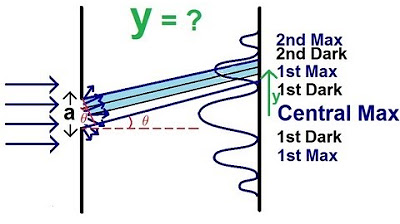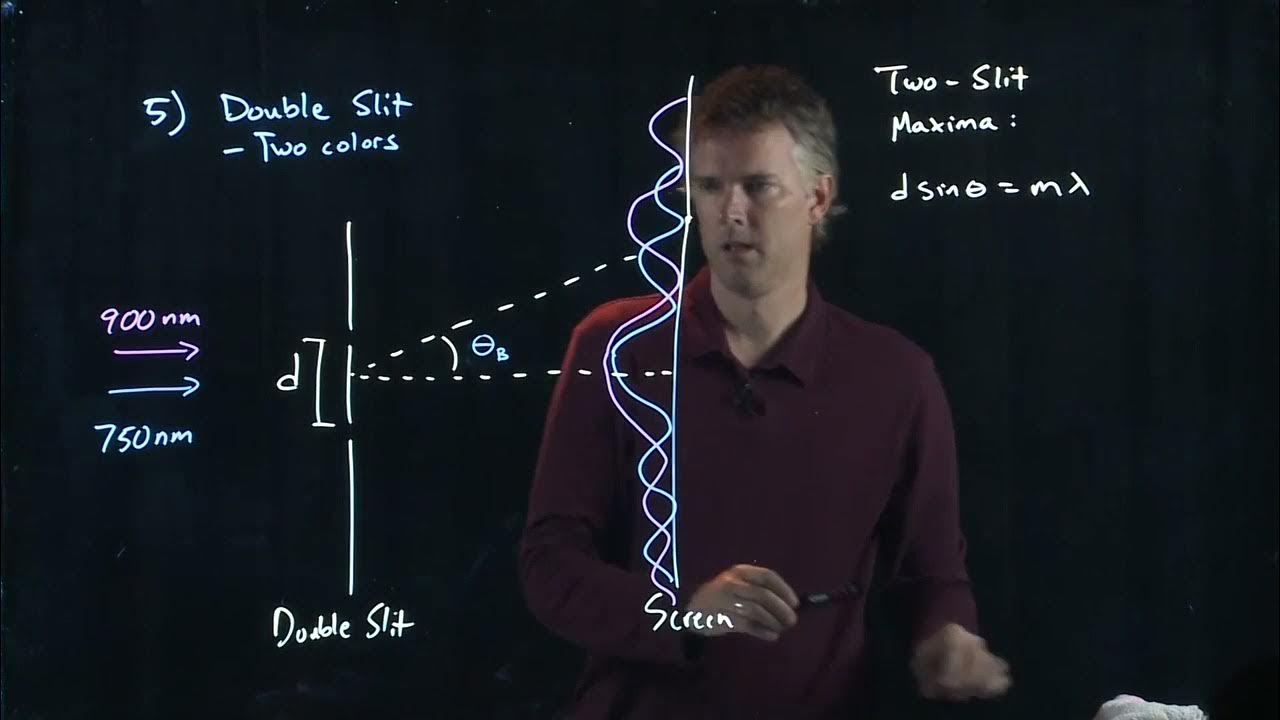Light Is Waves: Crash Course Physics #39
TLDRThis video explores the wave theory of light, including key evidence like diffraction patterns. It discusses seminal experiments by scientists like Huygens and Young that challenged the prevailing particle theory of light. Concepts covered include Huygens' Principle predicting wave propagation, diffraction causing light to bend around edges, interference generating bright and dark spots, the famous double-slit experiment producing a pattern of light and dark lines, and how diffraction around a coin leads to bright spots within its shadow.
Takeaways
- 😲 Huygens' Principle states that you can predict a wave's future position by analyzing its current state - treating each point on the wave as a new wave source.
- 😎 Diffraction is when waves bend around obstacles, unlike particles which would continue straight.
- 🤓 Interference is when waves combine, either constructively (amplitude increases) or destructively (amplitude decreases).
- 🔬 Thomas Young's double slit experiment showed light acts as a wave by producing an interference pattern.
- 🌈 White light passing through slits shows the rainbow colors through interference.
- 😀 The bright spot in the middle of a coin's shadow comes from constructive interference of diffracted light waves.
- 📏 Path difference determines whether diffraction through slits causes constructive or destructive interference.
- 🔭 For a single slit, a path difference equal to 1 wavelength causes destructive interference (dark band).
- 💡 For a single slit, 1.5 wavelengths causes constructive interference (bright band).
- 🌀 Huygens' principle and interference explain strange wave behaviors like the coin shadow phenomenon.
Q & A
What experiment did Thomas Young conduct in 1801 to demonstrate the wave properties of light?
-Thomas Young conducted the double-slit experiment, where he passed a narrow beam of sunlight through two tiny slits in a plate. This produced a diffraction pattern of multiple bright lines on a screen behind the slits, rather than just two bright lines as would be expected if light traveled in a straight line like particles.
What causes the bright spot in the center of a coin's shadow when a light shines on it?
-The bright spot is caused by constructive interference of the light waves that diffracted around the coin's edges. At that point, the waves have all traveled the same distance, so their crests and troughs line up to form a wave with higher amplitude.
How does path difference relate to interference patterns?
-The path difference is the difference in distance traveled by two waves, such as light waves from slits in the double-slit experiment. Whether the waves interfere constructively or destructively depends on the path difference. For example, a path difference equal to a whole number of wavelengths causes constructive interference.
What is Huygens' principle and how did it influence understanding of light?
-Huygens' principle states that every point on a wavefront acts as a source of tiny wavelets that spread out in a circle. By analyzing the propagation and interference of these wavelets, the future position of the wave can be predicted. This supported the idea that light acts as a wave.
How do single and double slits differ in terms of diffraction patterns?
-A single slit produces a pattern of bright and dark lines on a screen. The bright central line comes from rays perpendicular to the slit, while other lines depend on path differences. The double slit's pattern has a bright central band flanked by additional bands caused by interference of the two slit waves.
What causes diffraction of light?
-Diffraction occurs when a wave encounters an obstacle or slit that is around the same width as its wavelength. According to Huygens’ principle, each point on the wavefront spreads wavelets around the obstacle, which then interfere to produce the diffraction effects.
How does brightness relate to light intensity and amplitude?
-The intensity of light is proportional to the square of its amplitude. So if amplitude is doubled, intensity and brightness increase fourfold. If amplitude is tripled, intensity and brightness increase ninefold. More intense light appears brighter.
What determines the color of light?
-The color of light depends on its frequency and wavelength. Light on the blue end of the spectrum has a higher frequency and shorter wavelength, while redder light has a lower frequency and longer wavelength. A mix of all colors makes white light.
Why did some 19th century physicists think light could not produce a bright spot in a coin's shadow?
-At the time, many physicists thought light traveled in straight lines like particles. Based on this, they would not expect constructive interference of diffracted light waves in the coin's shadow, so the bright spot was counterintuitive.
How did the double-slit experiment demonstrate that light is a wave?
-The diffraction pattern produced on the screen showed light spreading out and bending around obstacles the way waves do. If light traveled like particles, there would just be two bright lines opposite the slits rather than a pattern of multiple bands caused by interference.
Outlines
😲 How the weird physics of light waves explain that bright spot in a coin's shadow
This paragraph explains how 19th century physicists discovered that light acts as a wave by analyzing the bright spot that appears in the middle of the shadow when you shine light on a coin. It describes Huygens' principle which models how every point on a wave spreads out over time. It then applies this principle to understand diffraction - how waves bend around obstacles. Combining diffraction with interference (how waves constructively and destructively combine) predicts the strange central bright spot in the coin shadow experiment.
🧠 Connecting the double-slit experiment and diffraction patterns to properties of light waves
This paragraph links the double-slit experiment and single-slit diffraction patterns to measurable properties of light waves. It explains how wavelength determines light color, and amplitude determines brightness/intensity. Using trigonometry, it shows how to calculate constructive and destructive interference for the double-slit experiment based on slit spacing. It then explains how path differences through a single slit lead to bright and dark bands. Finally, it ties everything together to qualitatively explain why the central bright spot appears in the coin shadow.
Mindmap
Keywords
💡wave
💡diffraction
💡interference
💡path difference
💡wavelength
💡intensity
💡slit experiment
💡Huygens' principle
💡particle
💡amplitude
Highlights
First significant research finding
Introduction of innovative methodology
Key conclusion and practical applications
Transcripts
Browse More Related Video

Physics - Diffraction of Light (1 of 4) The Thin Slit

Diffraction: Why Does It Happen? (Physics Explained for Beginners)

Interference Patterns

What is Wave Particle Duality?

Can You Capture a Light Wave? Mind-Blowing Wave-Particle Duality Experiment!

Two Slit Interference | Physics with Professor Matt Anderson | M28-18
5.0 / 5 (0 votes)
Thanks for rating: